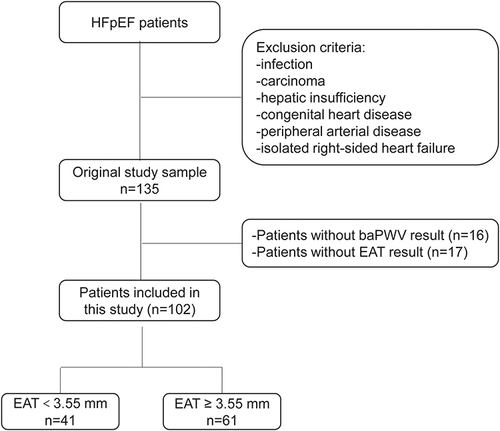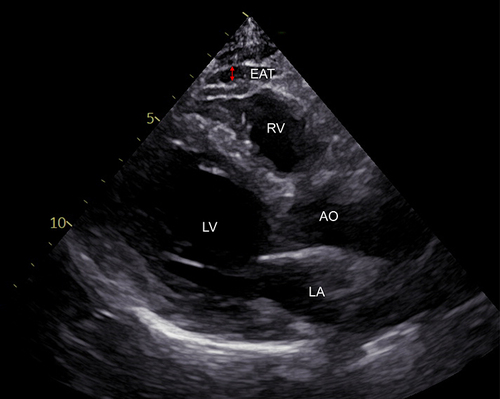Figures & data
Figure 1 Population selection flow diagram.

Figure 2 Ultrasound diagnostic apparatus assessment of epicardial adipose tissue (EAT) which was marked by the red arrow.

Figure 3 The receiver operating characteristic (ROC) curve of the EAT for predicting arterial stiffness.

Table 1 Characteristics of the Study Population According to EAT Thickness
Table 2 Correlation Analysis Among Epicardial Fat Thickness, baPWV, and Other Variables
Table 3 Multivariate Linear Regression Analysis for the Effect of Epicardial Fat Thickness on the Absolute Value of baPWV
